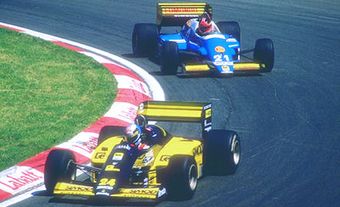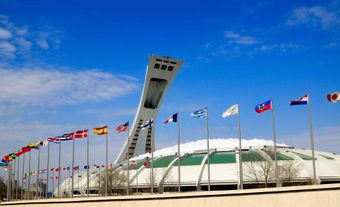This article was originally published in Maclean's Magazine on February 24, 2014
There was a time when Canada’s record at the Olympic Winter Games went something like this: We were excellent at hockey, good at figure skating and, occasionally, downhill skiing, and positively middling at just about everything else. For a country blanketed by ice and snow for half the year or more, our Olympic output was unremarkable—the embodiment, perhaps, of that unfortunate collective cliché in which participation is just as virtuous as winning.
Not anymore. The country’s medal haul in the XXII Olympic Winter Games in the first week at Sochi has further cemented the foundation set in Vancouver four years ago. Canada was once a pleasant also-ran. Today, it has teeth. And while Canadians have performed well in established Olympic events, our Olympians have excelled in sports that were the stuff of ski bums, skateboarders and daredevils not 25 years ago.
That Canada has become a leader in the X Games domain of the once-staid Olympic brand is the result of geography, pioneering precedent and cold, hard cash. Consider the case of Alexandre Bilodeau, the two-time gold-medal winner in Olympic moguls. Bilodeau was all of six years old when he watched Jean-Luc Brassard take gold in the 1994 Winter Olympics—two years after the act of bouncing through piles of packed snow became an Olympic event. A particularly intense personification of his sport, Brassard wore fluorescent patches on his knees, if only to highlight the machine-like workings of his lower body as he danced through the bumps.
Bilodeau and his fellow mogul medallers, Mikaël Kingsbury and the Dufour-Lapointe sisters, all hail from Montreal-area Quebec, a region known for the truly modest heights of its ski hills. There, moguls are a fact of life—and an exciting way to stave off the lift line. Ski and snowboard slopestyle were born out of skateboarding’s tendency to bounce off stairs, railings and benches. Long a darling of the X Games, slopestyle only became an Olympic event this year. Predictably, Canadians have performed strongly.
Precedent and geography also played a part in Canada’s interest in short-track speed skating. In 1984, speed skater Gaétan Boucher wowed Canadians in general, and Quebecers in particular, with his two gold and one silver and his fur-coat-wearing swagger. A generation of Canadian skaters adapted Boucher’s discipline of long-track skating to the ubiquitous outdoor arena. Canadians have since dominated the elbows-out sport of short-track speed skating, akin to roller derby with knives on one’s feet, since it was a demonstration sport in 1988 and a full-fledged Olympic event in 1992.
Of course, Canada’s success wouldn’t have been possible without money to back up the dreams. Here, too, the country has excelled. Often criticized for its unapologetically brash moniker, Canada’s Own the Podium initiative was thought by many to be a one-time effort to fund the country’s homegrown talent for the 2010 Vancouver Olympics.
Yet, it has since become a stable source of funding for Canadian athletes. OTP has invested more than $80 million in winter sports since 2010, which will increase to $100 million for the 2018 Games in Pyeongchang, South Korea. (The same goes for funding for Canada’s Paralympic athletes, which has increased by nearly 500 per cent since 2006.)
As well, Quebec’s athletes have long benefited from tax credits and a network of sport-specific schools. Add to this the funding from the likes of B2ten, a Quebec-based private-sector donor group, which has underwritten 19 Canadian athletes in Sochi—whose continued funding depends on their performance.
The results are plain and proud. In 1988, Canada won all of five medals, with nary a gold among them. As the IOC began to add new events, making the Winter Games more interesting, more dangerous and more fun to watch, Canada’s medal count began to climb, from seven in Albertville in 1992 to 13, then 15, 17, and 24 in Turin. In Vancouver, Canadian athletes won 26 medals. (It took just over 48 hours to match the Calgary medal count in Sochi.)
Sochi has also proven how, despite the rumblings of renewed nationalism by Quebec’s sovereignist government, Canada’s Olympians are as unified as ever. Quebec’s dominance in the early days of the Olympics has hardly fanned the sovereignist flame. Witness how Bilodeau and Kingsbury switched effortlessly from French to English and back again. Witness Kingsbury’s French press conference following his silver-medal win in mogul freestyle. “I am proud to be Canadian and to contribute to the country’s medal count,” he said. Witness how short-track skater Charles Hamelin, a native of the sovereignist stronghold riding of Verchères, draped a Maple Leaf flag over his shoulders to skate a few victory laps after his gold-medal run. It is further proof of what polls have long suggested: More and more, the issue of Quebec’s separation from Canada is a Baby Boomer’s pursuit.
After decades in the wilderness, we are in the midst of Canada’s new winter supremacy. Our successes in the Olympics’ new disciplines are as good an indication as any that the country is no longer an afterthought. It is, much like winter itself, a force of nature.
Maclean's February 24, 2014

 Share on Facebook
Share on Facebook Share on X
Share on X Share by Email
Share by Email Share on Google Classroom
Share on Google Classroom


